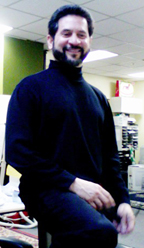NOTE FROM THE EDITOR:
My research on controversial topics continues to pay off. I found this excellent and interesting article, which, due to its length, it will be published in parts. In this piece you will learn about how is that President John Fitzgerald Kennedy’s Executive Order 11110, gave the Treasury Department Constitutional power to again create and issue currency -money – without going through the privately-owned Federal Reserve Bank, which is what is currently done now. It suggests that JFK was killed for that reason. THIRD PART OF A SERIES.
by John-F-Kennedy.net
Some people think the Federal Reserve Banks are United States Government institutions
THE FRBs are not Government institutions, departments, or agencies. They are private credit monopolies which prey upon the people of the United States for the benefit of themselves and their foreign customers. Those 12 private credit monopolies were deceitfully placed upon this country by bankers who came here from Europe and who repaid us for our hospitality by undermining our American institutions.
The FED basically works like this: The government granted its power to create money to the FED banks. They create money, then loan it back to the government charging interest. The government levies income taxes to pay the interest on the debt. On this point, it’s interesting to note that the Federal Reserve Act and the sixteenth amendment, which gave congress the power to collect income taxes, were both passed in 1913. The incredible power of the FED over the economy is universally admitted. Some people, especially in the banking and academic communities, even support it. On the other hand, there are those, such as President John Fitzgerald Kennedy, that have spoken out against it. His efforts were spoken about in Jim Marrs’ 1990 book Crossfire:”
Another overlooked aspect of Kennedy’s attempt to reform American society involves money. Kennedy apparently reasoned that by returning to the constitution, which states that only Congress shall coin and regulate money, the soaring national debt could be reduced by not paying interest to the bankers of the Federal Reserve System, who print paper money then loan it to the government at interest. He moved in this area on June 4, 1963, by signing Executive Order 11110 which called for the issuance of $4,292,893,815 in United States Notes through the U.S. Treasury rather than the traditional Federal Reserve System. That same day, Kennedy signed a bill changing the backing of one and two dollar bills from silver to gold, adding strength to the weakened U.S. currency.
Kennedy’s comptroller of the currency, James J. Saxon, had been at odds with the powerful Federal Reserve Board for some time, encouraging broader investment and lending powers for banks that were not part of the Federal Reserve system. Saxon also had decided that non-Reserve banks could underwrite state and local general obligation bonds, again weakening the dominant Federal Reserve banks”.
In a comment made to a Columbia University class on Nov. 12, 1963,
Ten days before his assassination, President John Fitzgerald Kennedy allegedly said:
“The high office of the President has been used to foment a plot to destroy the American’s freedom and before I leave office, I must inform the citizen of this plight.”
In this matter, John Fitzgerald Kennedy appears to be the subject of his own book… a true Profile of Courage.
This research report was compiled for Lawgiver.Org. by Anthony Wayne
What is the Federal Reserve Bank?
What is the Federal Reserve Bank (FED) and why do we have it?
by Greg Hobbs November 1, 1999
The FED is a central bank. Central banks are supposed to implement a country’s fiscal policies. They monitor commercial banks to ensure that they maintain sufficient assets, like cash, so as to remain solvent and stable. Central banks also do business, such as currency exchanges and gold transactions, with other central banks. In theory, a central bank should be good for a country, and they might be if it wasn’t for the fact that they are not owned or controlled by the government of the country they are serving. Private central banks, including our FED, operate not in the interest of the public good but for profit.
There have been three central banks in our nation’s history. The first two, while deceptive and fraudulent, pale in comparison to the scope and size of the fraud being perpetrated by our current FED. What they all have in common is an insidious practice known as “fractional banking.”
Fractional banking or fractional lending is the ability to create money from nothing, lend it to the government or someone else and charge interest to boot. The practice evolved before banks existed. Goldsmiths rented out space in their vaults to individuals and merchants for storage of their gold or silver. The goldsmiths gave these “depositors” a certificate that showed the amount of gold stored. These certificates were then used to conduct business.
In time the goldsmiths noticed that the gold in their vaults was rarely withdrawn. Small amounts would move in and out but the large majority never moved. Sensing a profit opportunity, the goldsmiths issued double receipts for the gold, in effect creating money (certificates) from nothing and then lending those certificates (creating debt) to depositors and charging them interest as well.
Since the certificates represented more gold than actually existed, the certificates were “fractionally” backed by gold. Eventually some of these vault operations were transformed into banks and the practice of fractional banking continued.
IT WILL CONTINUE ON THE WEEK EDITION.



